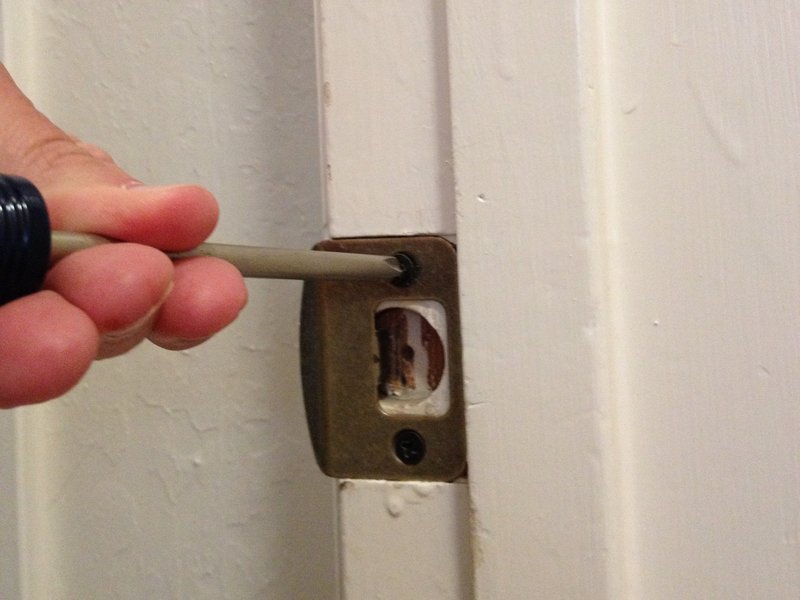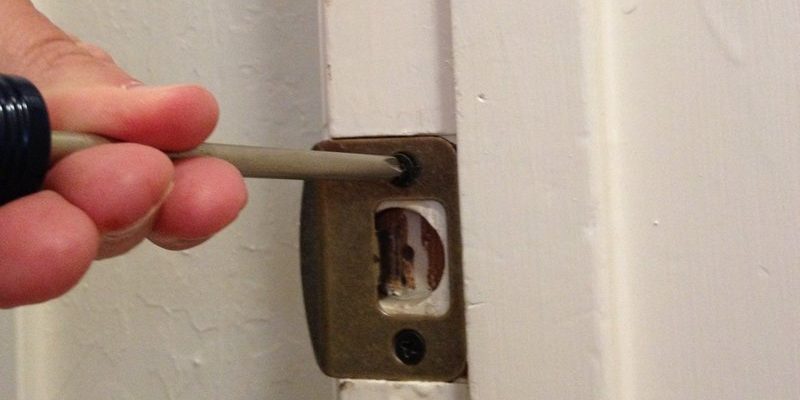
Here’s the thing: exterior doors might seem simple, but a few small adjustments can make a world of difference for their fit, feel, and security. Whether you’re working with a classic wooden front door, a newer steel model from Therma-Tru, or something custom from Pella, most rattling sounds come down to the same handful of issues. So, let’s get into the nitty-gritty of troubleshooting an exterior door that rattles when closed—and how you can silence it for good.
Why Do Exterior Doors Rattle When Closed?
If you’ve ever wondered why your entryway sounds like it’s trying to communicate in Morse code every time there’s a breeze, you’re definitely not alone. Most exterior doors—no matter the brand or style—rattle because of small gaps, loose parts, or problems with how they’re mounted. It can be surprisingly subtle. Sometimes, it’s a tiny wiggle in the door’s latch. Other times, it’s a barely-noticeable gap caused by a shifting frame.
Let me explain. Over time, houses settle, hardware wears down, and even the sturdiest door can start to move just enough to make noise. If the weatherstripping is worn out or the strike plate isn’t lined up right, your door loses that snug, reassuring *click* when it closes. Instead, it flaps just slightly—and there’s your rattle. Rattles are usually a sign that your door isn’t as secure or energy-efficient as it could be, so it’s worth tracking down the cause.
You might be thinking, “But my door shuts just fine—it locks and everything!” The truth is, even if a door *seems* to close well, a tiny bit of play can cause rattling, drafts, and eventual wear on the lock or hinges. It’s not just about peace and quiet. Fixing the rattle can mean better insulation, less strain on your lock (important for code-locked or smart entry systems), and a longer-lasting door overall.
Checking the Door Latch and Strike Plate Alignment
Here’s where most people start—and honestly, it’s a smart move. The latch and strike plate work together to keep your door closed tight. If either isn’t working perfectly, the door can move slightly in its frame. That’s usually where the rattle comes from. Think of the latch and strike plate as an old married couple: when they’re in sync, everything’s smooth; when they’re out of whack, you’re going to hear about it.
Start by gently pulling on your closed door without unlocking it. If it moves or wobbles, chances are the latch isn’t holding it firmly against the weatherstripping or stop. Sometimes, you’ll actually see a tiny gap between the door and the frame, especially near the latch. This can happen if the strike plate isn’t lined up with the latch, or if the plate is worn or bent.
To check the alignment:
- Open the door and look at the latch and strike plate. Is the latch hitting the middle of the opening in the plate, or rubbing on the edge?
- If the latch is off-center, you may need to adjust the strike plate by loosening the screws and moving it up, down, or sideways just a little. Then re-tighten and test the fit.
- On some doors, the hole in the frame isn’t deep enough for the latch to fully extend. Carefully enlarge it with a small file if needed.
- If your door has a universal or code-entry lock, check the battery and electronics as well—sometimes weak power can cause incomplete latching.
A latch that’s even a hair out of place can stop your door from sealing tightly—causing both rattles and security problems.
Inspecting and Adjusting Door Hinges
You might be wondering if those hinges—hidden away on the side, out of sight and out of mind—could really be causing all this fuss. The answer? Absolutely. Hinges do a lot of heavy lifting, literally. If they get loose or start to sag, the door can shift just enough to rattle every time you close it.
Here’s what often happens: over months or years, the screws holding your hinges can slowly back out, or the wood around them can get worn (especially with heavier doors). When that happens, the door starts to drop just a bit. Instead of sitting flush in the frame, it hangs at a tiny angle—enough to cause a gap at the latch or weatherstripping.
To check your hinges:
- Open the door partway and lift gently on the handle. If it moves up and down, the hinges are loose.
- Tighten all the hinge screws using a good-quality screwdriver. Don’t overtighten—just enough to snug them up without stripping the wood.
- If a screw just spins or won’t tighten, try a longer screw or fill the hole with a bit of wood glue and a toothpick before replacing the screw.
- If your door is still sagging, you might need to reset the hinges altogether or replace them with a stronger set (especially if you have a heavy steel or code-entry door).
If your door rattles even after the latch and strike plate look perfect, don’t skip the hinges—they’re the silent culprit more often than you’d think.
Replacing or Upgrading Weatherstripping
Here’s the unsung hero of quiet, secure doors: weatherstripping. This soft, flexible seal runs along the sides and top of your door frame, cushioning the door each time it closes. If it’s missing, cracked, or flattened, your door can move around in the frame, leading to rattling, drafts, and—honestly—higher energy bills.
Let me explain. Weatherstripping works sort of like that foam lining in a case for expensive headphones. It fills up small gaps, offers a gentle seal, and keeps everything snug. When it wears out, your door suddenly has “room to complain,” and the rattle arrives.
Here’s how to check and upgrade your weatherstripping:
- Inspect the weatherstripping all the way around. Is it soft and springy, or dry, cracked, or missing in spots?
- Close the door and look for daylight or feel for a draft around the edges—those are sure signs you need new weatherstripping.
- Remove the old stripping. Most types just pull out, but be gentle to avoid damaging the frame.
- Get a replacement that matches your door’s style (foam, rubber, or vinyl are common). Measure carefully before buying—universal kits work for most brands, but some doors, like Pella or Therma-Tru, might need a specific profile.
- Install the new weatherstripping, making sure it forms a tight, even seal all the way around.
Upgrading weatherstripping is one of the simplest, cheapest ways to silence a rattling exterior door—and boost your home’s efficiency, too.
Adjusting the Door Sweep or Threshold
Don’t overlook the bottom of your door. The door sweep (that flexible strip on the base) and the threshold (the raised “step” under the door) work together to seal out drafts, water, and—yep—rattles. If the sweep is missing or the threshold isn’t making good contact, airflow and movement at the base can make your door sound like it’s tap-dancing in a storm.
Adjusting these parts is actually pretty straightforward. Most door sweeps attach with screws or adhesive and can be replaced with a universal version from any hardware store. Thresholds on newer brands like Therma-Tru or Pella are often adjustable—just look for screws along the top that let you raise or lower the surface a little.
To fix a loose sweep or threshold:
- Check if the sweep is worn, torn, or flattened. If so, remove and replace it—this takes just a few minutes.
- If your threshold has visible screws, try tightening or loosening them to raise the height until the sweep just brushes the top when the door closes.
- After any adjustments, open and close the door several times, listening for rattling and feeling for a tight seal.
The bottom of the door is where all sorts of sneaky problems can hide. Take five minutes to check the sweep and threshold, and you might solve the rattle for good.
Looking for Warping, Swelling, or Frame Damage
Sometimes, a rattling door isn’t just about hardware or worn-out seals. Materials like wood can swell, shrink, or even warp with changes in temperature and humidity, especially on exterior doors exposed to the elements. Even the best steel doors can shift if the frame or subfloor underneath has moved.
Here’s how to spot warping and related issues:
- Stand back and look along the edge of the door. Does it look bent, twisted, or uneven anywhere?
- Close the door and check if the gap is even all the way around. Big changes, especially after wet weather, often mean swelling or warping.
- Inspect the frame for signs of damage—cracks, rot, or gaps at the corners can all let the door move and rattle.
- On older homes, or after a foundation shift, you might need to call in a carpenter to reset the frame or even replace the door.
If you catch warping early, sometimes you can sand down high spots or adjust the hinges to help the door fit again. But if there’s actual damage to the frame or door itself, it might be time to consider a replacement—especially if you want to upgrade to a more energy-efficient or smart-enabled model.
When to Call a Professional (And When to DIY)
Here’s the honest truth: most door rattling problems are DIY-friendly. If you’re comfortable with a drill, screwdriver, or picking up a simple repair kit, you’ll likely handle 90% of issues on your own. There’s something satisfying about tightening a hinge or swapping out weatherstripping—and enjoying that peaceful silence when the door finally closes just right.
That said, there are times when a pro is worth the call:
- Major warping, rot, or structural frame issues
- Heavy doors with specialized locks, codes, or electronic systems (especially if you need to reset or re-pair remotes, like with some smart locks)
- Cases where the door is sticking, won’t open or close at all, or you notice water damage around the entryway
If your rattling issue is minor, though, give these troubleshooting steps a try first. Universal hardware kits or brand-specific products (like Therma-Tru’s adjustable thresholds, or Pella’s custom weatherstripping) are designed for fast, beginner-friendly fixes.
Don’t underestimate the difference a quiet, solid-closing exterior door can make. It’s about comfort, security, and—let’s be honest—a little sanity.
Wrapping Up: Enjoying a Quieter, More Secure Door
Tracking down a rattling exterior door might feel like chasing a ghost at first. But with a little patience and know-how, you can usually find and fix the culprit with basic tools and a few affordable parts. Whether it’s the latch, hinges, sweep, or something bigger, taking time to troubleshoot not only silences the rattle—it also makes your home warmer, safer, and more welcoming.
So the next time you hear that telltale shake when you close your front or back door, remember: it’s not just noise. It’s a problem with a solution, and a chance to make your entryway work better for years to come.
